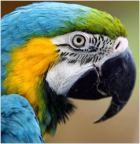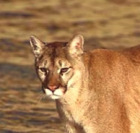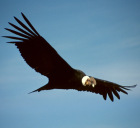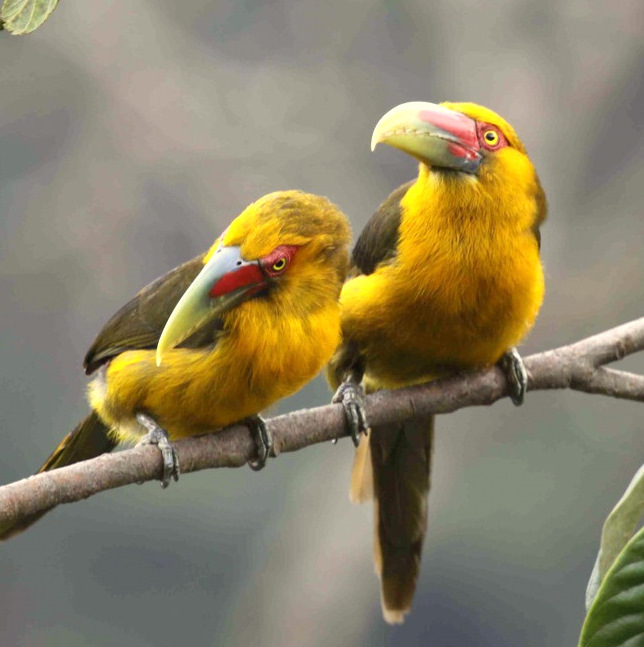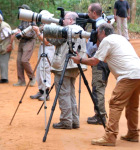CARAÇA AND THE CARATINGA BIOLOGICAL STATION: Monkeys & More!
Brazil's Atlantic forests were thriving for 20 million years before the Amazon River started flowing and the Andes rose from the plains. Isolated from other wet forests by the Chaco to the west, Cerrado dry grasslands to the north and Atlantic ocean to the east and south, the flora and fauna of these forests have evolved to make the region a world leader in endemics. Of the 21 primate species and subspecies found in the Atlantic forest, 18 are endemic. Close to 160 bird species are endemic to the Atlantic forests and edge habitats. Around 1,000 of Brazil's 2,305 known orchid species are found here, although a thorough inventory has yet to be completed. In terms of endemics, the forests of southeastern Brazil are often likened to Madagascar.
One other comparison to Madagascar is just as telling. The Atlantic forest is considered the second most endangered tropical forest ecosystem, following Madagascar. Over 95% of the original forests are gone, and only isolated patches remain. Many of the world's most striking creatures live a precarious existence in a series of spectacular parks, reserves, and unprotected areas.
This tour visits two of the most spectacular reserves in the Atlantic forest system, with a chance to visit the World Heritage City of Ouro Preto as well. Caraça Natural Park is a reserve in the mountains a few hours east of Belo Horizonte, the state capital. The reserve was originally a seminary retreat placed amid tall mountains and lush tropical forests. The spectacular beauty of the reserve is surpassed only by the abundant diversity of wildlife living within it. Three primate species occur here. Our accommodations are in the renovated rooms of the monastery, overlooking an attractive garden and the montane forests below.
Toucans, guans and hummingbirds abound, and with just a little luck we can see and photograph the rare Maned Wolf. The only wolf in South America, it is endangered due to habitat destruction and an insatiable taste for chickens. While it is normally a solitary animal, priests at the seminary have been leaving food for the wolves on the front steps of the church for years. It is not unusual for two or more to come each night. While quick motions scare them, they are not bothered by flash photography. We see the Maned Wolf on our nature tours to Emas National Park and occasionally in a few other areas, but they are usually in tall grass or at some distance. Only here can one see the entire animal with ease.
Caraça Natural Park also hosts a number of rare, endemic and endangered bird species. Specialties include Pale-throated Pampa-Finch, Hyacinth Visorbearer, Gray-backed Tachuri, Gilt-edged, Brassy-breasted, Green-headed and Cinnamon Tanagers, Long-trained and Scissor-tailed Nightjars, Ochre-rumped and Dusky-tailed Antbirds, Large-tailed Antshrike, Brazilian Ruby, White-throated Hummingbird, Swallow-tailed Cotinga and others.
The Caratinga Biological Station is a private reserve located within the Fazenda Montes Claros, or Montes Claros Ranch. The entire lowland region was forested as recently as the early 1940's, but settlement brought rapid destruction of the rain forest. One man, Sr. Feliciano Miguel Abdalla, had the foresight to save roughly 2,000 acres, which is now the Station.
The star attraction here is the Muriqui. This is the largest primate in the Americas, the largest mammal endemic to Brazil and one of the most endangered primates on Earth. Three other primate species occur here, along with the Three-toed Sloth, other mammals and over 200 bird species. We'll look for the Rufous-capped Motmot, Ferruginous Pygmy Owl, Blue-winged Macaw, Flame-capped (Golden-capped) and Blue-throated Parakeets, Vinaceous-breasted Parrot, Tawny-browed Owl, White-tailed Trogon, Reddish Hermit, Black Jacobin, Crescent-Chested Puffbird, Black-necked Araçari, Shrike-like Cotinga, Scaled Antbird, Streamer-tailed and Long-tailed Tyrants, Red-rumped Cacique, Blue Dacnis, Green-headed, Fawn-breasted, Gilt-edged, Burnished Buff, Flame-crested, Black-goggled, Guira and Magpie Tanagers. The fazenda, or ranch, is a coffee plantation, and there is a good chance of enjoying a cup of Brazil's best during our visit.
This is another of our most popular tours, and we have several offerings each year. One can add Serra do Cipó National Park to itineraries designed in this region. Serra da Canastra National Park, to the west, is another impressive destination in the state, with Giant Anteaters, Maned Wolves and a number of rare bird species including the Brazilian Merganser.

